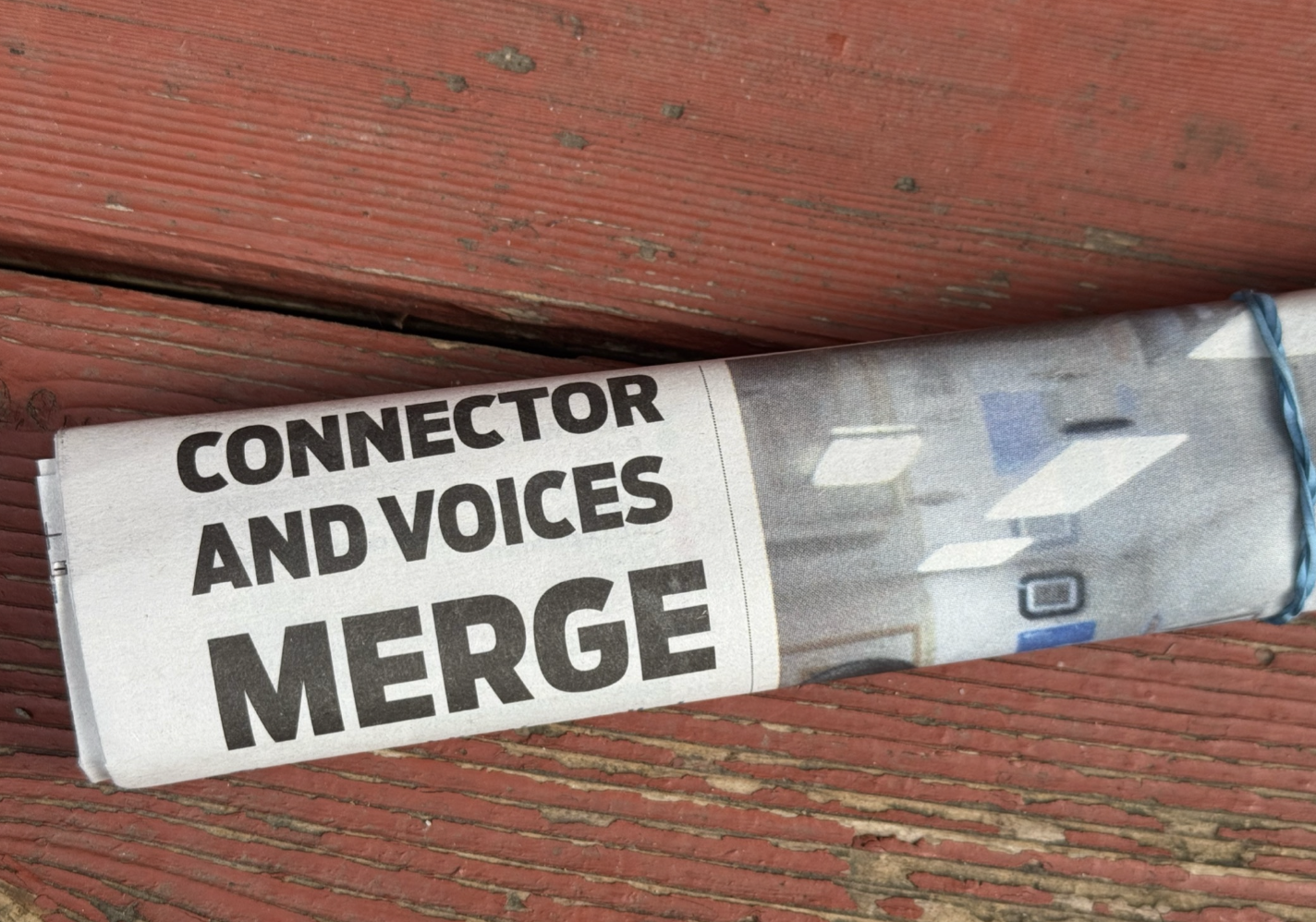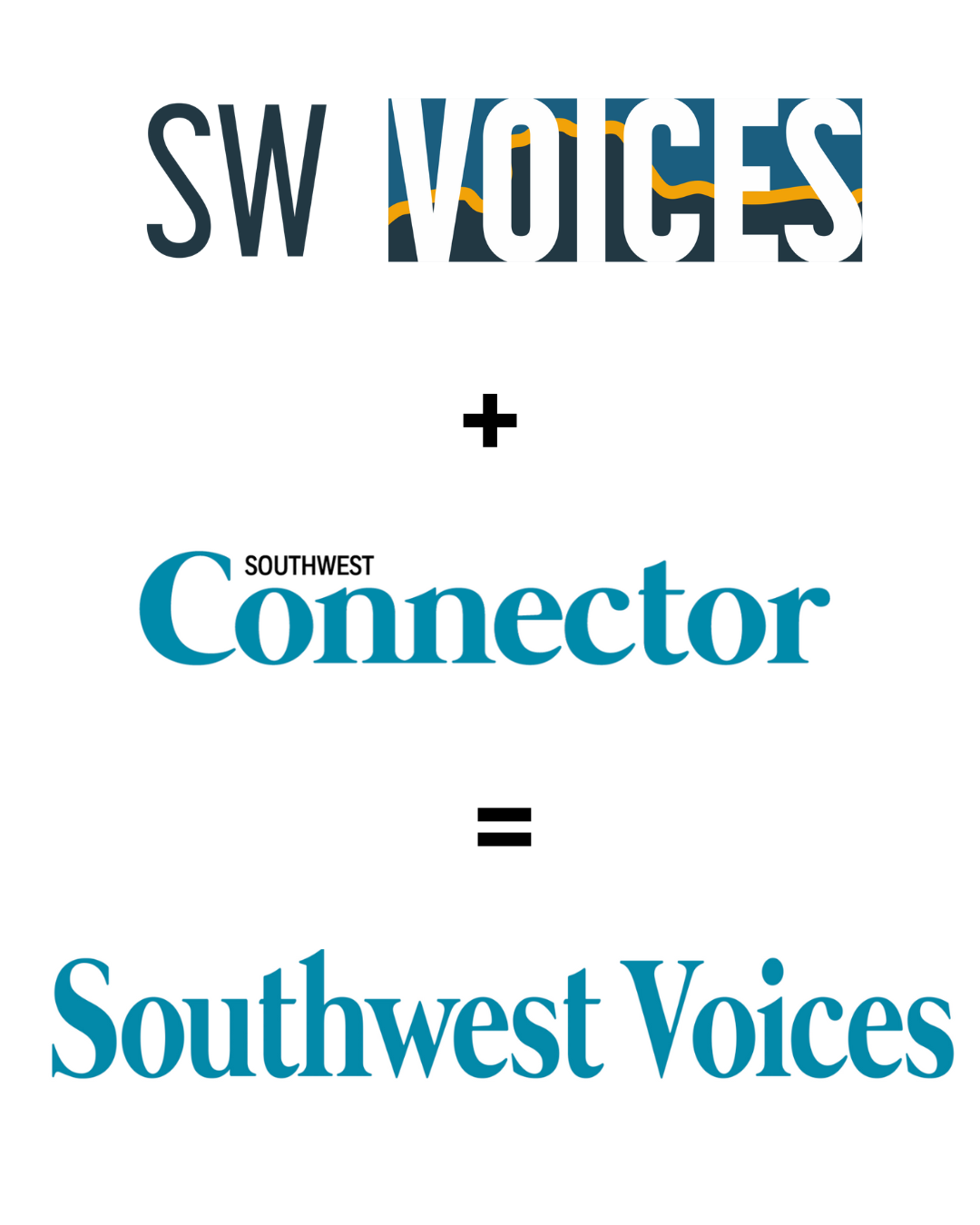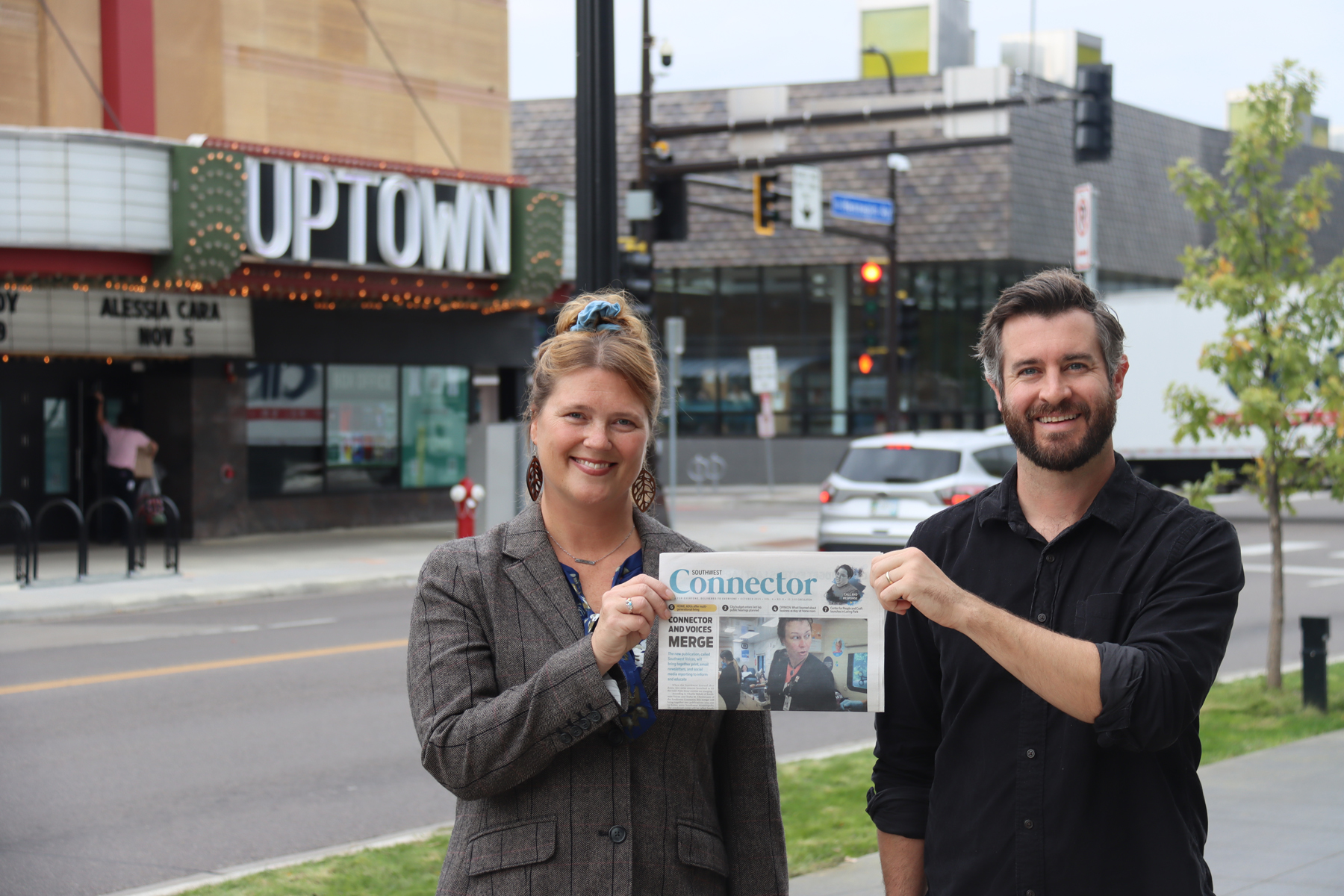When the Southwest Journal shut down, two news sources launched to fill the void. Now those entities are merging.
According to Charlie Rybak of Southwest Voices and Tesha M. Christensen of the Southwest Connector, this merger will bring together two publications into one to better serve Southwest Minneapolis. The combined entity will be called Southwest Voices.
“This merger pulls together the various ways people receive news into one company,” observed Christensen. “We’re paying attention to the myriad of ways that people receive news today, and aim to offer something for everyone. This includes a monthly print edition, weekly emailed newsletters, website, and social media updates. We’re excited to be working together.”
“Southwest Minneapolis, where I am from and where I live today, is incredibly important to me. I am delighted to get to work with Tesha to join forces and form a great neighborhood newspaper that pulls together the best of the Connector and Southwest Voices in one. We want to not only keep the residents of our community informed, but also build a sustainable print and digital news business that other people can learn from,” said Rybak.
In December 2021, Tesha M. Christensen of TMC Publications CO expanded her newspaper business and added a third one, the Southwest Connector, going door-to-door in the community with a free print publication and website that reaches over 50,000 people a month through direct delivery. Christensen also operates the 42-year-old Longfellow Nokomis Messenger in South Minneapolis and 50-year old Midway Como Frogtown Monitor in St. Paul.
Charlie Rybak (a political and digital media strategist) and Andrew Haeg (an American Public Media alum who founded GroundSource, a texting platform focused on newsrooms and nonprofits) started a daily newsletter with an accompanying website and robust social media presence. Through its Instagram, Facebook and Twitter accounts, it reaches 250,000 people every month on social media and thousands of neighbors through the email newsletter.
“Since the Connector and Voices started, we have often been confused with each other,” remarked Christensen. “This merger will clear things up and simplify it for our readers and advertisers. There’s just one hyper-local publication now in Southwest Minneapolis.”
In May 2025, Minneapolis Voices announced a reset and transition. This merger represents a path forward for the publication as it enters its fifth year of operations in October. The revenue for Voices has come from three sources: ad sales, grants, and memberships.

Revenue for the Southwest Connector has been all ad sales. While it provided two newspapers a month initially, it dropped to once a month in 2024.
With the merger, owners believe the publication is strongly positioned for the future with a solid financial footing that will include ad sales, grants and memberships.
“We see that many local small, medium and large companies are putting time and money into Google and Facebook ads, which don’t necessarily reach the people who live around their businesses and pull them in to make purchases. We’re focused on offering various ad packages that include print, website and newsletter ads, sponsored content, and videos – and it’s all niche marketing that goes to the people who live and work in Southwest Minneapolis. Plus these are ads they don’t click away because our readers want to support their community businesses,” said Christensen.
Among the menu of advertising options are larger buys through two entities:
• MNcomm – a coalition of family-owned print publications and websites that includes Southwest Voices, Northeaster, Longfellow Nokomis Messenger, Midway Como Frogtown Monitor, St. Paul Publishing and Community Reporter that reaches 400,000 people through print publications and websites
• Twin Cities Media Group – hyper-local publications including Southwest Voices, Racket, Heavy Table, New Prensa, North News and KRSM with a collective 20,000 email subscribers (with 50-70% open rates), 300,000 website visitors every month, and a mix of channels like radio, digital and print
“Hyperlocal journalism creates stronger communities, from the news and stories we look forward to on a daily basis to the small businesses consumers want to get to know – with this merger, we are excited to offer every single resident in Southwest Minneapolis access to hyperlocal journalism, both offline and online,” observed Southwest Voices Advertising Relations Manager Vasiliki Papanikolopoulos. “Likewise, businesses and organizations will now have a comprehensive suite of advertising options to reach those in the area, to engage and inspire with their messaging while keeping their marketing dollars local.”
She added, “ It’s an honor to be able to continue to work with those businesses that have advertised in paper for years as well as those that have embraced the opportunities of digital advertising. We thank early supporters like Josh Zuehlke and Co., Ingebretsen’s and Keljik’s Oriental Rugs who help make hyperlocal journalism possible.”

What’s next for Southwest Voices?
While the monthly print publication, website articles and Monday newsletter will continue to be free to all, look for specific members-only benefits being rolled out. Among those will be niche newsletters highlighting various topics that neighbors have expressed interest in learning more about. Got an idea on what topics you’d like these newsletters to focus on? Email info@southwestvoices.news. These members-only newsletters will direct member subscriptions into original reporting, as well as time-intensive events calenders. They will also offer targeted marketing for neighborhood businesses and organizations.
There will be no changes (other than the name) for print readers and no changes for newsletter readers. If you’ve been following Southwest Connector on Instagram or Facebook, switch to Southwest Voices. Those who aren’t yet newsletter subscribers or members, sign up at southwestvoices.news.
Voices still aims to be a community-led source for reliable news and information that promotes civic engagement – without the conflict and negativity that plagues some social media groups and platforms, according to its founders.
“We keep hearing that newspapers are dying, but that is not a new perspective. People said that about newspapers when the radio came in. They said it about radio and newspapers when television arrived. And when the internet exploded, they said that about radio, television and newspapers. But we still have all of those things,” remarked Christensen. “I am confident that we will continue to have them. We can’t stay the same, of course, but need to pivot and adapt. There is a future for neighborhood news that looks a lot different than national or even state-wide news outlets. At Voices, we plan to continue to connect with people, ask them what they need and want, and then give them that.”
“A lot of people have a lot to say about Minneapolis. But it’s really important for the people of Minneapolis to be able to tell their own story,” Rybak said.
As local media evolves in the Twin Cities, Southwest Voices is poised to offer readers and businesses reliable information, relevant content, and connection about the community that matters most to them.

.jpg)





